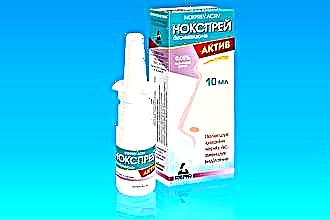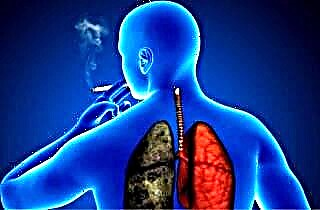Cor pulmonale (PC) - hypertrophy of the right ventricle, resulting from diseases of the lungs themselves (impaired function, structure). The exceptions are cases when the primary cause is diseases of the left half of the heart or congenital defects, and drugs are a secondary phenomenon. Allocate: acute, subacute, chronic. According to scientific data, the frequency of the disease is 5-10% of all cardiovascular pathology.
What is cor pulmonale?
LC – a syndrome that includes pulmonary failure and congestion of the right ventricle (RV), which ends in cardiac decompensation. Among the causes, there is damage to the tissue of the lungs, blood vessels, or diseases that disrupt the excursion of the chest.
There are 2 stages of development:
- There is no drug yet, there is only pulmonary insufficiency.
- Combination of circulatory insufficiency (NK) and dysfunction of the respiratory system.
The pathogenesis is based on an increase in the resistance of the vessels of the lungs and an increase in pressure in the pulmonary artery (PA), as a result of which congestion of the pulmonary circulation occurs, and as a result, the right parts of the heart increase. A chain of such transformations leads to hypoxia and acidosis.
The degree of pulmonary hypertension in mm Hg:
- I - 25 - 50.
- II - 51 - 75.
- III - 76 - 110.
- IV> 110.
Causes
Classification
| Etiology (type of process) | |||
|---|---|---|---|
| In the vessels (vascular) | In the parenchyma (bronchopulmonary) | Thoracodiaphragmatic | |
| Acute LS |
|
| |
| Subacute drugs |
|
|
|
| Chronic cor pulmonale (CPS) |
|
|
|
Typical patient complaints
Clinical features: course of the disease
Complaints:
Heartache.
- Dyspnea.
- Palpitations.
- Cough with phlegm.
- Sweating.
- Headache.
- Weakness.
- Swelling.
- Decrease in blood pressure.
When examining a patient:
- Diffuse "warm" cyanosis.
- Distended veins in the neck (especially when inhaling).
- Thickening of the ends of the phalanges and nails ("drum sticks" and "watch glasses").
- Lung percussion sound: boxed. Auscultation: hard breathing with prolonged expiration, scattered dry and wet wheezing.
- Listening to the heart: accent II tone over the LA with systolic or diastolic murmur, gallop rhythm near the xiphoid process. Expansion of the border to the right is observed with percussion.
- Edema, ascites, hepatomegaly, anasarca.
How to accurately diagnose the stage and type of process?
A cardiologist and a pulmonologist are jointly involved in the diagnosis, and later on the treatment of chronic pulmonary disease.
The classification of chronic cor pulmonale (presented above) helps determine the type of process:
- vascular;
- bronchopulmonary;
- thoracodiaphragmatic.
Stages:
- preclinical - is determined only with additional examination and is characterized by RV overload and short-term pulmonary hypertension;
- compensation - hypertrophied pancreas and pulmonary hypertension, but there are no signs of NK;
- decompensation - manifestations of NK are observed.
Additional diagnostics:
X-ray: enlargement of the LA, the right heart and the root of the lung, the dome of the diaphragm is high on the side of the lesion;
- ECG: hypertrophy of the right atrium and ventricle;
- spirometry: determines the presence of respiratory failure and helps to establish its type with degree;
- echocardiography: enlarged right heart and increased pressure in the PA;
- pulmonary angiography: presence of pulmonary embolism.
Patient treatment and drug support
Basic principles of therapy according to the protocol:
- Treatment of the underlying disease.
- Improved oxygenation.
- Improving the function of the left ventricle by increasing its contractility and decreasing the resistance of the pulmonary artery.
- Treatment of manifestations of heart failure.
Indications for oxygen therapy:
- Ra O2 55-59 mm Hg, Sa O2 ≤ 89 %.
- ECG signs: the presence of an extended flat P wave (pulmonale).
- Hematocrit> 55%.
- The presence of heart failure.
Purpose of treatment:
- Ra O2 ≥ 60 mm Hg.
- Sa O2 > 90%.
List of required appointments
Antibiotic therapy for COPD:
During an exacerbation, semi-protected penicillins (amoxiclav, augmentin), macrolides (clarithromycin, rovamycin).
- Cephalosporins II-IV generations (ceftriaxone, cefatoxime, cefapim).
- Fluoroquinolones III-IV generations (levofloxacin, gatifloxacin).
Diuretics:
- In case of fluid retention: furosemide - 20 - 80 - 120 mg / day, torasemide - 10 - 20 mg per day, diacarb - 200 - 300 mg per day.
- Potassium-preserving diuretic: veroshpiron - 50 mg 2 times a day.
Theophyllines:
- Prolonged action: teopek, teodur, teotard (reduce the pressure in the pulmonary artery, have a positive inotropic effect, dilate the bronchi).
Beta 2 agonists:
- Short-acting: salbutamol, ventolin.
- Long-acting: salmeterol, formoterol.
- Action like theophylline.
Vasodilators:
- Calcium antagonists: nifedipine - 40-60 mg per day, diltiazem - 120-180 mg per day.
- Nitrates: nitroglycerin, molsidomin.
- Reduce pressure in the pulmonary artery.
ACE inhibitors:
Captopril - 25-150 mg per day, lisinopril - 5-40 mg per day.
- Effect: dilatation of arterioles, veins.
Cardioprotectors:
- Trimetazidine - 35 mg 2 times a day.
- ATP - 10-20 mg per day.
Sometimes in the presence of concomitant left ventricular failure or tachysystolic atrial fibrillation, small doses are used cardiac glycosides (digoxin - 0.25 mg per day).
Anticoagulants and antiplatelet agents:
- Fraxiparine - 0.6 p / w.
- Aspirin - 75-150 mg per day.
- Clopidogrel - 75 mg per day.
Conclusions
Treatment of the states of subcompensation and decompensation of chronic cor pulmonale is a very difficult process for the doctor and the patient. Therefore, it is necessary to concentrate on the treatment of the underlying disease, as well as the prevention of thromboembolism at the outpatient stage, in order to prevent complications. The prognosis depends on many factors: the cause, type and stage, the degree of pulmonary insufficiency, as well as the treatment process.



